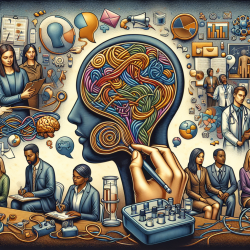Dyslexia is a multifaceted learning disability that affects reading fluency, decoding, and word recognition. Recent research titled "Dyslexics’ Fragile Oculomotor Control Is Further Destabilized by Increased Text Difficulty" provides valuable insights into the oculomotor challenges faced by dyslexic individuals, particularly when confronted with complex texts. As practitioners dedicated to improving outcomes for children, understanding and applying these findings can be pivotal.
In this study, 46 dyslexic and 41 non-dyslexic adolescents' eye movements were analyzed while reading two different texts: L’Alouette, a dyslexia screening test, and 35 Kilos D’Espoir, a children’s book. The findings were clear: dyslexics exhibited significant oculomotor difficulties, such as smaller saccade amplitudes, higher peak velocities, and greater saccade disconjugacy, especially when reading the more challenging text.
Key takeaways for practitioners include:
- Text Difficulty Matters: Dyslexic students struggle more with texts that require extensive word decoding without context clues. When reading L’Alouette, dyslexics made more regressive saccades, read slower, and made more mistakes.
- Oculomotor Control: Poor binocular coordination, as evidenced by higher saccade disconjugacy, indicates that dyslexics have intrinsic eye movement abnormalities that are exacerbated by difficult texts.
- Reading Strategies: Implementing texts that provide context and narrative flow, like 35 Kilos D’Espoir, can help dyslexic students read more smoothly and with fewer errors.
For practitioners, these findings underscore the importance of selecting appropriate reading materials and incorporating oculomotor training into therapeutic interventions. By focusing on texts that are engaging and contextually rich, we can help dyslexic students improve their reading skills and overall academic performance.
Additionally, further research is encouraged to explore the relationship between text complexity and oculomotor control. Such investigations could lead to more refined strategies for supporting dyslexic readers and optimizing their educational experiences.
To read the original research paper, please follow this link: Dyslexics’ Fragile Oculomotor Control Is Further Destabilized by Increased Text Difficulty.










